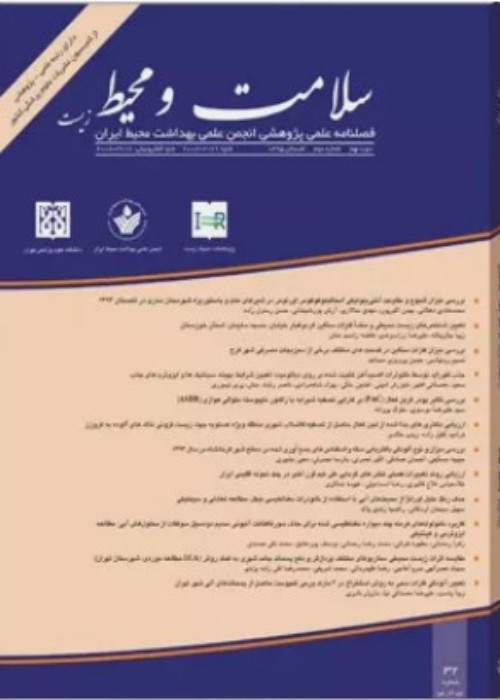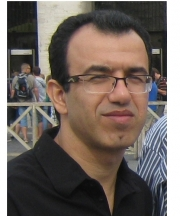Optimization of activated carbon production by using K2CO3 at different temperatures for the removal of Reactive Black 5 dye from aqueous solutions
Author(s):
Article Type:
Research/Original Article (دارای رتبه معتبر)
Abstract:
Background And Objective
Reactive dyes are the newest dyes in textile industry. They may cause environmental problems. The aim of this study was to remove Reactive Black 5 (RB5) in aqueous solutions with activated carbon that was made from grape wood.Materials And Methods
The activated carbon was synthesized by potassium carbonate with impragnation ratios of 1:0.25 at different temperatures (600,650,700,750,800,850,900)°C. Experiments on dye adsorption were done under the same conditions including pH of 2, adsorbent dose of 0.025 g/L, initial dye concentration of 250 mg/L, volume of 100 mL, and contact time of 120 min. Then, the absorption RB5 in a bathc mode was done using the optimized activated carbon. The trends of pH, absorbent dose, initial concentration, temperature, retention time, parametrs were studied. The BET and SEM techniques were used to characterize the activated carboon. Finally, the equilibrium, synthetic and thermodynamic studies were done for RB5.Results
The results showed that the activated carbon sample that was synthesized under the imprenation ratio of 1:0.25 and temperature of 900 oC had a surface area 1670 m2/g. Moreover, the total pore volume was 1.134 cm3/g and 68% of the total pore size were within mesoporous zone. The highest adsorption capacity was observed at the optimum condition. The optimum condition with the maximum adsorption capacity for RB5 was pH of 2, adsorbent dose of 0.035 g/L and temperature 45 °C. According to the equilibrium test results RB5 followed the Freundlich model. of the kinetic adsorption results showed that RB5 showed a pseudo-second-order kinetic model. According to the thermodynamic studies, it seems that RB5 absorption process was an endothermic, non-spontaneous and physical sorption process.Conclusion
The study showed that the produced-activated carbon from grape wood had a great potentioal for removing RB5 from aqueous solutions.Language:
Persian
Published:
Iranian Journal of Health and Environment, Volume:10 Issue: 4, 2018
Pages:
483 to 500
magiran.com/p1807728
دانلود و مطالعه متن این مقاله با یکی از روشهای زیر امکان پذیر است:
اشتراک شخصی
با عضویت و پرداخت آنلاین حق اشتراک یکساله به مبلغ 1,390,000ريال میتوانید 70 عنوان مطلب دانلود کنید!
اشتراک سازمانی
به کتابخانه دانشگاه یا محل کار خود پیشنهاد کنید تا اشتراک سازمانی این پایگاه را برای دسترسی نامحدود همه کاربران به متن مطالب تهیه نمایند!
توجه!
- حق عضویت دریافتی صرف حمایت از نشریات عضو و نگهداری، تکمیل و توسعه مگیران میشود.
- پرداخت حق اشتراک و دانلود مقالات اجازه بازنشر آن در سایر رسانههای چاپی و دیجیتال را به کاربر نمیدهد.
دسترسی سراسری کاربران دانشگاه پیام نور!
اعضای هیئت علمی و دانشجویان دانشگاه پیام نور در سراسر کشور، در صورت ثبت نام با ایمیل دانشگاهی، تا پایان فروردین ماه 1403 به مقالات سایت دسترسی خواهند داشت!
In order to view content subscription is required
Personal subscription
Subscribe magiran.com for 70 € euros via PayPal and download 70 articles during a year.
Organization subscription
Please contact us to subscribe your university or library for unlimited access!



